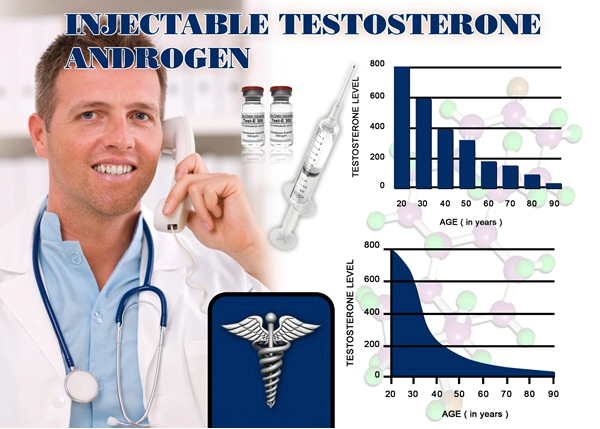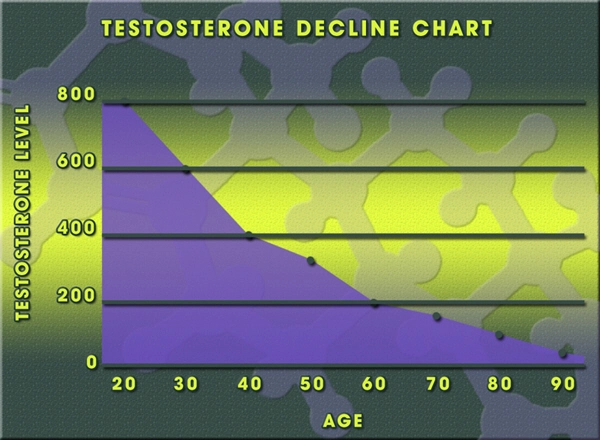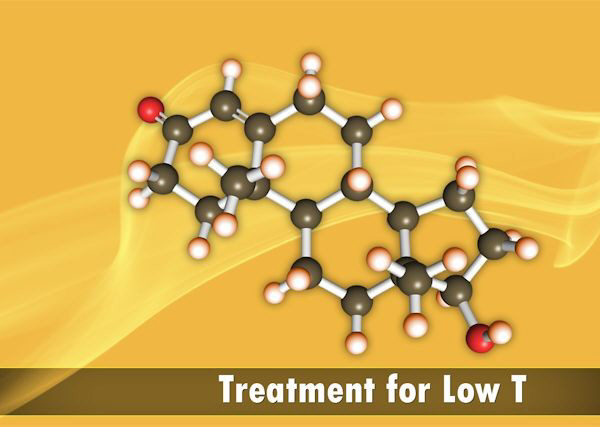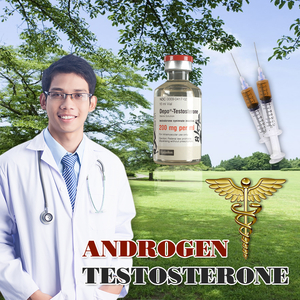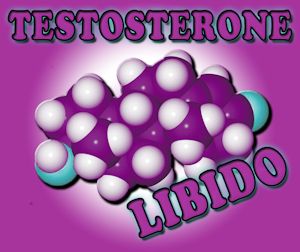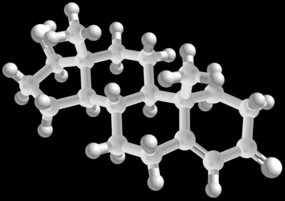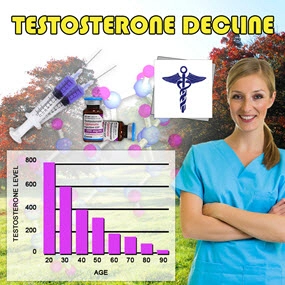Introduction
Aveed, a testosterone replacement therapy developed by Endo Pharmaceuticals, has been a subject of interest in the medical community, particularly regarding its effects on skin and hair health. This article explores a comprehensive year-long dermatological study focused on American males using Aveed. The study aims to shed light on how this therapy influences skin and hair conditions, providing valuable insights for both patients and healthcare providers.
Study Design and Methodology
The study involved 200 American males aged between 30 and 60 years, all diagnosed with hypogonadism and prescribed Aveed. Participants were monitored over a year, with dermatological assessments conducted at baseline, 6 months, and 12 months. Parameters evaluated included skin texture, acne prevalence, hair density, and any reported dermatological side effects.
Effects on Skin Health
Acne and Skin Texture
One of the most notable findings was the increase in acne prevalence among participants. At the 6-month mark, 35% of participants reported new or worsening acne, which increased to 42% by the end of the study. This aligns with the known androgenic effects of testosterone, which can stimulate sebaceous glands and lead to acne. However, not all effects were negative; 28% of participants noted an improvement in skin texture, describing their skin as feeling "smoother" and "more hydrated."
Skin Sensitivity and Irritation
A smaller subset of participants, approximately 15%, reported increased skin sensitivity or irritation, particularly in the first few months of treatment. This could be attributed to the initial hormonal adjustments and the body's response to increased testosterone levels. Dermatologists recommended using gentle, non-comedogenic skincare products to mitigate these effects.
Effects on Hair Health
Hair Density and Growth
The study found a positive correlation between Aveed use and hair density. By the end of the year, 55% of participants reported an increase in hair density, particularly on the scalp and face. This suggests that testosterone replacement therapy can be beneficial for men experiencing hair thinning due to low testosterone levels. However, it is crucial to note that individual responses varied, and some participants did not observe significant changes in hair growth.
Hair Loss and Alopecia
Interestingly, while some participants benefited from increased hair density, 10% reported hair loss or worsening of existing alopecia. This paradoxical effect could be due to the complex interplay between testosterone and its metabolite, dihydrotestosterone (DHT), which is known to contribute to male pattern baldness. Genetic predispositions and individual hormonal profiles likely play a role in these outcomes.
Overall Dermatological Side Effects
Throughout the study, participants reported various dermatological side effects, ranging from mild to moderate. These included increased oiliness of the skin (30%), dry skin (20%), and the development of rashes or hives (5%). While most side effects were manageable with appropriate dermatological care, a few participants required adjustments to their Aveed dosage or temporary discontinuation of the therapy.
Conclusion
The year-long study on the effects of Aveed on skin and hair health in American males provides critical insights into the dermatological impacts of testosterone replacement therapy. While some participants experienced positive changes such as improved skin texture and increased hair density, others faced challenges like acne and hair loss. These findings underscore the importance of personalized medical care and regular monitoring when using Aveed. Dermatologists and healthcare providers should consider these potential effects when prescribing testosterone replacement therapy and work closely with patients to manage any dermatological concerns that arise.
In conclusion, Aveed can significantly influence skin and hair health, and understanding these effects is essential for optimizing treatment outcomes and patient satisfaction. Further research and long-term studies are warranted to continue exploring the nuances of testosterone replacement therapy and its impact on dermatological health.
Contact Us Today For A Free Consultation

- Aveed: Revolutionizing Testosterone Therapy for Fatigue and Low Libido in American Men [Last Updated On: March 17th, 2025] [Originally Added On: March 17th, 2025]
- Aveed: A Guide to Testosterone Therapy for Hypogonadism in American Men [Last Updated On: March 18th, 2025] [Originally Added On: March 18th, 2025]
- Aveed: Enhancing Bone Health in American Men with Hypogonadism [Last Updated On: March 18th, 2025] [Originally Added On: March 18th, 2025]
- Aveed Safety for American Men with Pre-existing Conditions: Risks and Monitoring [Last Updated On: March 18th, 2025] [Originally Added On: March 18th, 2025]
- Aveed: A Promising Treatment for Depression Linked to Low Testosterone in Men [Last Updated On: March 19th, 2025] [Originally Added On: March 19th, 2025]
- Aveed Therapy: Essential Monitoring for Safety and Efficacy in Hypogonadism Treatment [Last Updated On: March 20th, 2025] [Originally Added On: March 20th, 2025]
- Aveed: Revolutionizing Testosterone Replacement Therapy in America [Last Updated On: March 20th, 2025] [Originally Added On: March 20th, 2025]
- Aveed: Testosterone Therapy's Role in Weight Management for American Men with Hypogonadism [Last Updated On: March 21st, 2025] [Originally Added On: March 21st, 2025]
- Aveed Therapy: Enhancing Muscle Mass in American Men with Low Testosterone [Last Updated On: March 21st, 2025] [Originally Added On: March 21st, 2025]
- Aveed Therapy: Impact on Prostate Health and Monitoring Guidelines for American Men [Last Updated On: March 21st, 2025] [Originally Added On: March 21st, 2025]
- Aveed's Impact on Sleep Quality in American Men with Hypogonadism: A Review [Last Updated On: March 21st, 2025] [Originally Added On: March 21st, 2025]
- Aveed: Enhancing Cognitive Function in American Men with Low Testosterone [Last Updated On: March 22nd, 2025] [Originally Added On: March 22nd, 2025]
- Aveed: Long-Acting Injectable for Treating Low Testosterone in American Men [Last Updated On: March 22nd, 2025] [Originally Added On: March 22nd, 2025]
- Aveed: A Long-Acting Solution for Low Testosterone in American Men [Last Updated On: March 22nd, 2025] [Originally Added On: March 22nd, 2025]
- Aveed: A New Hope for American Men with Chronic Fatigue Syndrome [Last Updated On: March 22nd, 2025] [Originally Added On: March 22nd, 2025]
- Aveed: Revolutionizing Testosterone Therapy for American Men with Hypogonadism [Last Updated On: March 22nd, 2025] [Originally Added On: March 22nd, 2025]
- Aveed: Enhancing Life for American Men in High-Stress Careers [Last Updated On: March 22nd, 2025] [Originally Added On: March 22nd, 2025]
- Aveed: Revolutionizing Sexual Dysfunction Treatment in American Men [Last Updated On: March 23rd, 2025] [Originally Added On: March 23rd, 2025]
- Aveed: Enhancing Physical Performance in American Men with Low Testosterone [Last Updated On: March 23rd, 2025] [Originally Added On: March 23rd, 2025]
- Aveed: Transforming Lives of American Men with Severe Hypogonadism [Last Updated On: March 23rd, 2025] [Originally Added On: March 23rd, 2025]
- Aveed: Revolutionizing Testosterone Therapy for American Men with Long-Acting Injection [Last Updated On: March 24th, 2025] [Originally Added On: March 24th, 2025]
- Aveed: Effective Long-Acting Testosterone Therapy for American Men with Hypogonadism [Last Updated On: March 24th, 2025] [Originally Added On: March 24th, 2025]
- Longitudinal Study: Aveed's Impact on Aging American Men's Health and Vitality [Last Updated On: March 24th, 2025] [Originally Added On: March 24th, 2025]
- Enhancing Aveed Therapy: Diet, Exercise, and Monitoring for Optimal Health in Men [Last Updated On: March 24th, 2025] [Originally Added On: March 24th, 2025]
- Aveed: A Promising Solution for Osteoporosis Prevention in American Men [Last Updated On: March 24th, 2025] [Originally Added On: March 24th, 2025]
- Aveed: Enhancing Mental Health in American Men with Low Testosterone [Last Updated On: March 24th, 2025] [Originally Added On: March 24th, 2025]
- Aveed: A Long-Acting Solution for Anemia in Men with Low Testosterone [Last Updated On: March 25th, 2025] [Originally Added On: March 25th, 2025]
- Aveed: A Long-Acting Solution for Severe Hypogonadism in American Men [Last Updated On: March 25th, 2025] [Originally Added On: March 25th, 2025]
- Aveed Therapy: Educating American Men for Successful Testosterone Replacement [Last Updated On: March 25th, 2025] [Originally Added On: March 25th, 2025]
- Aveed: Revolutionizing Men's Health with Long-Acting Testosterone Therapy [Last Updated On: March 25th, 2025] [Originally Added On: March 25th, 2025]
- Aveed: Enhancing Injury Recovery in American Men with Testosterone Therapy [Last Updated On: March 25th, 2025] [Originally Added On: March 25th, 2025]
- Aveed: Revolutionizing Low Testosterone Treatment in American Men with Long-Acting Injectable [Last Updated On: March 25th, 2025] [Originally Added On: March 25th, 2025]
- Aveed: Long-Acting Testosterone Therapy for Hypogonadism in American Men [Last Updated On: March 25th, 2025] [Originally Added On: March 25th, 2025]
- Aveed's Impact on Metabolic Health in American Men with Hypogonadism: Benefits and Considerations [Last Updated On: March 25th, 2025] [Originally Added On: March 25th, 2025]
- Aveed: Enhancing Life for Diabetic Men with Low Testosterone [Last Updated On: March 25th, 2025] [Originally Added On: March 25th, 2025]
- Aveed's Impact on Skin Health: Benefits and Risks for American Men [Last Updated On: March 26th, 2025] [Originally Added On: March 26th, 2025]
- Aveed: Enhancing Immune Function in American Men with Testosterone Deficiency [Last Updated On: March 26th, 2025] [Originally Added On: March 26th, 2025]
- Aveed: Enhancing Cardiovascular Fitness in American Men with Testosterone Therapy [Last Updated On: March 26th, 2025] [Originally Added On: March 26th, 2025]
- Aveed Therapy Enhances Sleep Quality in Men with Low Testosterone: Clinical Insights [Last Updated On: March 26th, 2025] [Originally Added On: March 26th, 2025]
- Aveed Therapy: Importance of Regular Blood Tests for Monitoring and Safety [Last Updated On: March 27th, 2025] [Originally Added On: March 27th, 2025]
- Aveed Therapy: Understanding Its Impact on Hair Loss in Men with Low Testosterone [Last Updated On: March 27th, 2025] [Originally Added On: March 27th, 2025]
- Aveed: Long-Acting Testosterone Therapy for Men with Heart Disease and Low Testosterone [Last Updated On: March 27th, 2025] [Originally Added On: March 27th, 2025]
- Aveed: Revolutionizing Testosterone Therapy with Long-Acting Injections for Hypogonadism [Last Updated On: March 27th, 2025] [Originally Added On: March 27th, 2025]
- Aveed: Managing Hypogonadism and Chronic Pain in American Men [Last Updated On: March 28th, 2025] [Originally Added On: March 28th, 2025]
- Aveed: Revolutionizing Hypogonadism Treatment for American Men [Last Updated On: March 28th, 2025] [Originally Added On: March 28th, 2025]
- Aveed: Enhancing Post-Surgical Recovery with Long-Acting Testosterone Therapy [Last Updated On: March 28th, 2025] [Originally Added On: March 28th, 2025]
- Aveed's Impact on Blood Pressure in Hypogonadism Treatment: Monitoring and Management [Last Updated On: March 28th, 2025] [Originally Added On: March 28th, 2025]
- Aveed: Testosterone Therapy and Liver Health Monitoring for American Men [Last Updated On: March 29th, 2025] [Originally Added On: March 29th, 2025]
- Aveed's Impact on Cholesterol: Monitoring and Management for American Men on TRT [Last Updated On: March 30th, 2025] [Originally Added On: March 30th, 2025]
- Aveed: Enhancing Mental Clarity in American Men with Low Testosterone [Last Updated On: March 31st, 2025] [Originally Added On: March 31st, 2025]
- Aveed: Enhancing Athletic Performance in American Men with Testosterone Therapy [Last Updated On: March 31st, 2025] [Originally Added On: March 31st, 2025]
- Maximizing Aveed Therapy Benefits: Diet, Exercise, Sleep, and Lifestyle for American Men [Last Updated On: April 2nd, 2025] [Originally Added On: April 2nd, 2025]
- Aveed: Revolutionizing Low Testosterone Treatment in American Men [Last Updated On: April 3rd, 2025] [Originally Added On: April 3rd, 2025]
- Aveed: Enhancing Digestive Health in American Men Through Testosterone Therapy [Last Updated On: April 4th, 2025] [Originally Added On: April 4th, 2025]
- Aveed for Hypogonadism: Benefits and Kidney Function Risks in American Men [Last Updated On: April 4th, 2025] [Originally Added On: April 4th, 2025]
- Aveed's Impact on Vision: Monitoring and Managing Side Effects in American Men [Last Updated On: April 6th, 2025] [Originally Added On: April 6th, 2025]
- Enhancing Mental Health Support for Men on Aveed Therapy: A Multifaceted Approach [Last Updated On: April 8th, 2025] [Originally Added On: April 8th, 2025]
- Aveed: Enhancing Life for American Men with Low Testosterone and Respiratory Issues [Last Updated On: April 8th, 2025] [Originally Added On: April 8th, 2025]
- Aveed: Testosterone Therapy's Potential in Enhancing Hearing in American Men [Last Updated On: April 10th, 2025] [Originally Added On: April 10th, 2025]
- Aveed: Revolutionizing Low Testosterone Treatment for American Men [Last Updated On: April 10th, 2025] [Originally Added On: April 10th, 2025]
- Aveed: Revolutionizing Hypogonadism Treatment for American Men's Health [Last Updated On: April 10th, 2025] [Originally Added On: April 10th, 2025]
- Aveed: Revolutionizing Testosterone Therapy for American Men with Hypogonadism [Last Updated On: April 10th, 2025] [Originally Added On: April 10th, 2025]
- Aveed: Effective Long-Acting Testosterone for Men with Neurological Disorders [Last Updated On: April 11th, 2025] [Originally Added On: April 11th, 2025]
- Aveed Boosts Skin Elasticity in American Men with Low Testosterone: Benefits and Risks [Last Updated On: April 11th, 2025] [Originally Added On: April 11th, 2025]
- Aveed: Enhancing Dental Health in American Men Through Testosterone Therapy [Last Updated On: April 12th, 2025] [Originally Added On: April 12th, 2025]
- Aveed Therapy: Enhancing Joint Health in American Men with Hypogonadism [Last Updated On: April 13th, 2025] [Originally Added On: April 13th, 2025]
- Aveed: Enhancing Nail Health in American Men Through Testosterone Therapy [Last Updated On: April 15th, 2025] [Originally Added On: April 15th, 2025]
- Aveed Therapy: Importance of Regular Check-ups for Safe Treatment in American Men [Last Updated On: April 15th, 2025] [Originally Added On: April 15th, 2025]
- Aveed: A Breakthrough in Treating Low Testosterone in American Men [Last Updated On: April 15th, 2025] [Originally Added On: April 15th, 2025]
- Aveed: Testosterone Therapy's Role in Managing Hair Loss in American Men [Last Updated On: April 16th, 2025] [Originally Added On: April 16th, 2025]
- Aveed Therapy: Importance of Hormone Level Monitoring for American Men [Last Updated On: April 16th, 2025] [Originally Added On: April 16th, 2025]
- Aveed's Impact on Eye Health in American Men with Hypogonadism: Benefits and Risks [Last Updated On: April 16th, 2025] [Originally Added On: April 16th, 2025]
- Aveed's Impact on Muscle Recovery in American Men with Low Testosterone [Last Updated On: April 17th, 2025] [Originally Added On: April 17th, 2025]
- Aveed: Enhancing Bone Density in American Men with Hypogonadism [Last Updated On: April 18th, 2025] [Originally Added On: April 18th, 2025]
- Aveed: Revolutionizing Low Testosterone Treatment with Less Frequent Dosing [Last Updated On: April 18th, 2025] [Originally Added On: April 18th, 2025]
- Aveed: A Vital Solution for American Men with Autoimmune Diseases and Low Testosterone [Last Updated On: April 19th, 2025] [Originally Added On: April 19th, 2025]
- Aveed: Revolutionizing Testosterone Therapy for American Men with Low T [Last Updated On: April 20th, 2025] [Originally Added On: April 20th, 2025]
- Aveed: Enhancing Longevity in American Men with Hypogonadism [Last Updated On: April 20th, 2025] [Originally Added On: April 20th, 2025]
- Aveed: Long-Acting Testosterone Therapy for American Males with Hypogonadism [Last Updated On: April 22nd, 2025] [Originally Added On: April 22nd, 2025]
- Aveed: Long-Acting Testosterone Therapy for American Men with Hypogonadism [Last Updated On: April 22nd, 2025] [Originally Added On: April 22nd, 2025]
Word Count: 588

